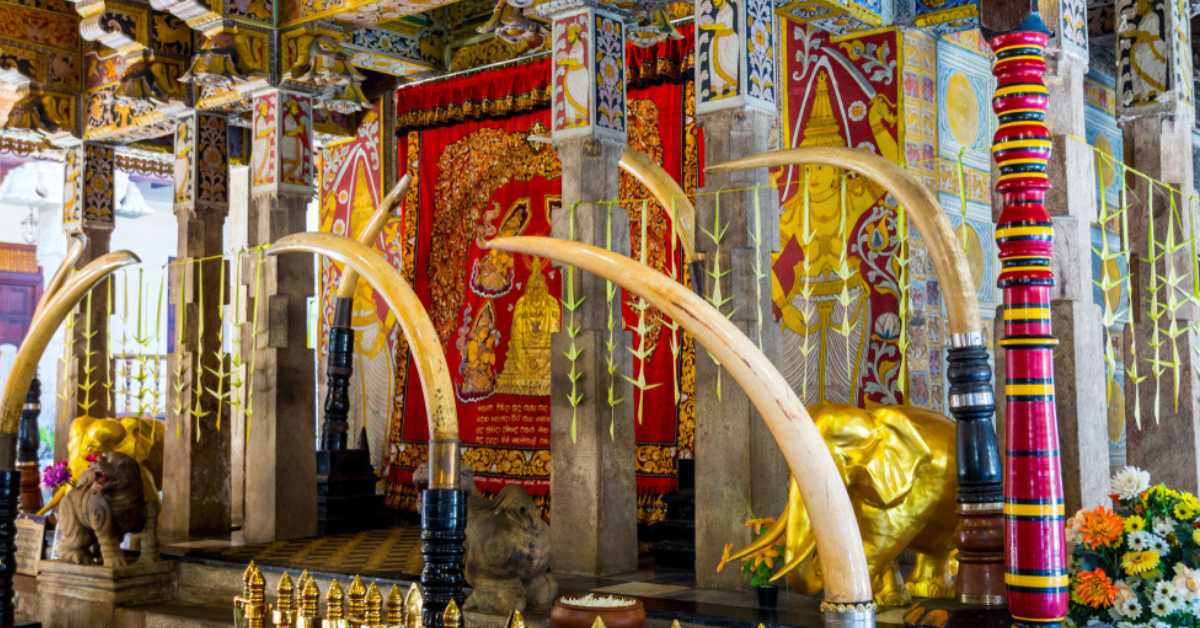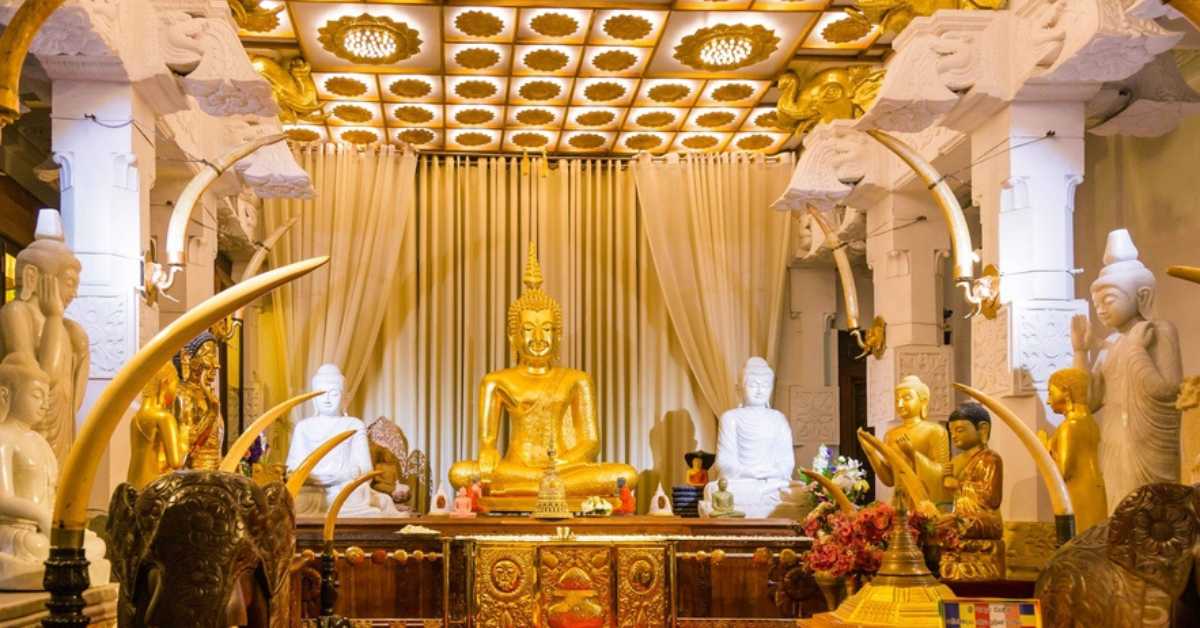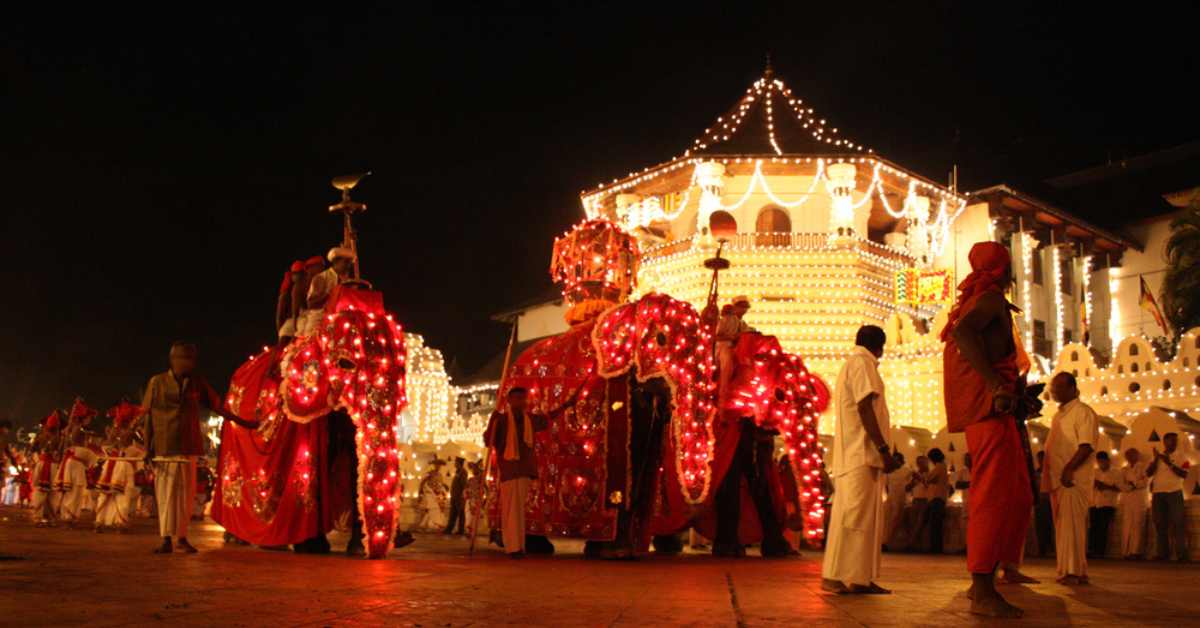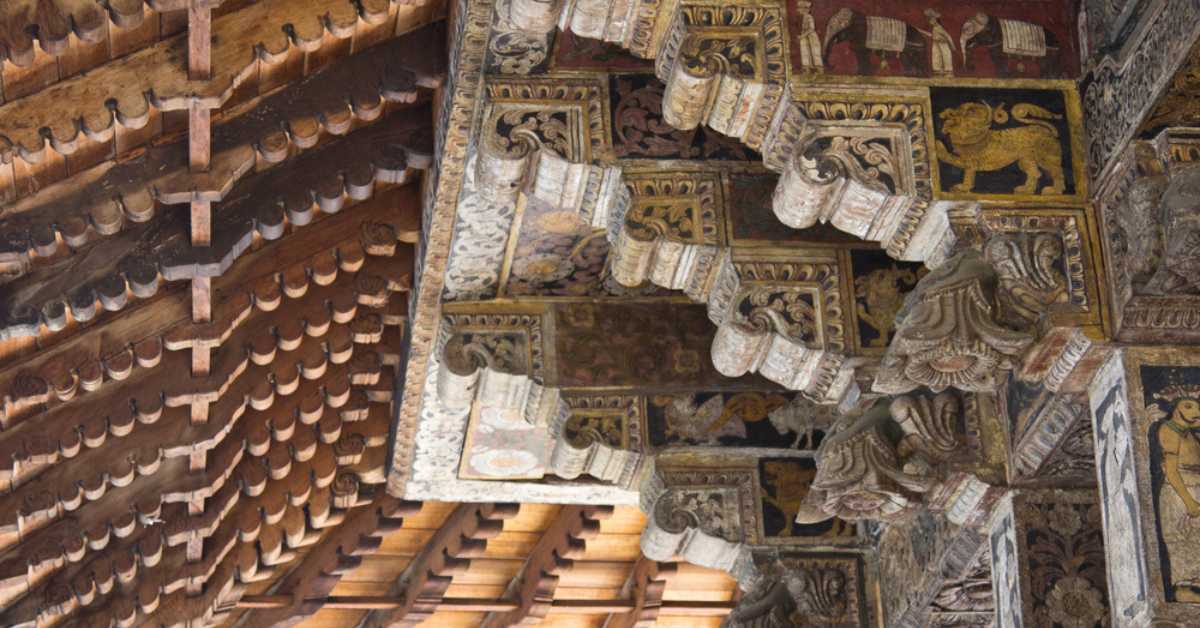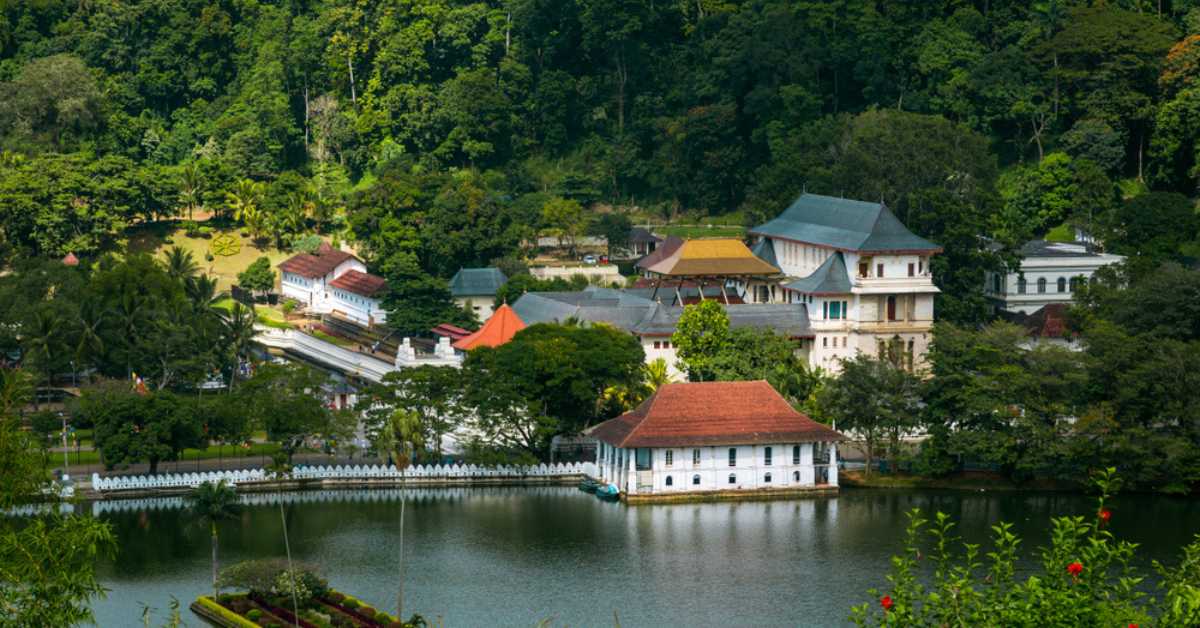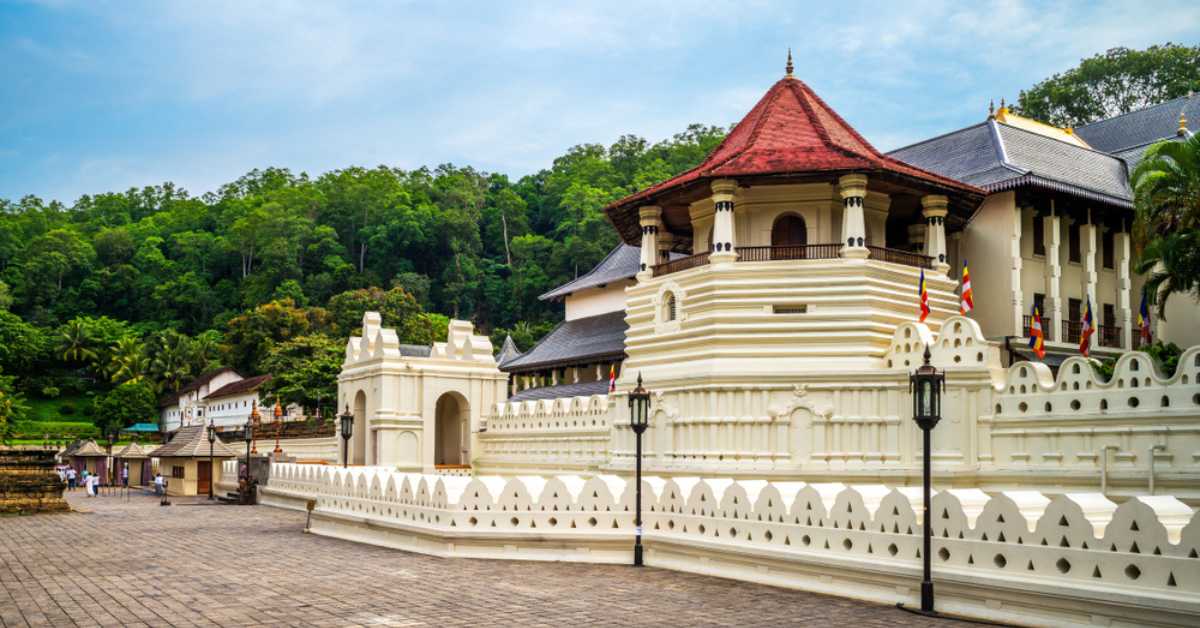
Sri Lanka is a land of spiritual wonder, steeped in a rich history that spans thousands of years. The Temple of the Sacred Tooth Relic is a beacon of faith and devotion among the country’s many cultural treasures. Located in the ancient city of Kandy, the temple is a pilgrimage site for millions of Buddhists from around the world who come to pay their respects to one of the most sacred relics of the Buddha.
History of the Temple of the Sacred Tooth Relic
The Temple of the Sacred Tooth Relic has a lengthy and fascinating history spanning over a century. According to mythology, a princess who had received the tooth relic as a gift from the Buddha himself carried it to Sri Lanka. The tooth was first enshrined in Sri Lanka’s ancient capital, Anuradhapura, where it stayed for centuries.
The tooth was transported to Polonnaruwa, another historical city in Sri Lanka, in the fourth century A.D. It was placed in a particular shrine. Throughout time, the tooth became a symbol of Sri Lankan royalty, and it was thought to have the capacity to legitimise kings and rulers.
The tooth was relocated to Kandy, Sri Lanka’s final sovereign kingdom, in the 16th century and has stayed there ever since. King Vimaladharmasuriya I constructed the temple that holds the tooth relic in the 17th century, and successive rulers extended and refurbished it.
The temple has been crucial in Sri Lanka’s political and cultural development. It was the scene of several significant rites and rituals, notably the yearly Esala Perahera festival, which drew pilgrims from all over the island.
Over the years, the temple has also encountered several difficulties. It was demolished and rebuilt several times through numerous invasions and conflicts, and it was severely damaged in a terrorist attack in 1998. Yet, the temple has always been restored to its previous splendour and remains a significant emblem of Sri Lankan culture and tradition.
Architecture and Design of the Sacred Tooth Relic Temple
The Temple of the Sacred Tooth Relic is an excellent example of how Sri Lankans build and design buildings. The temple complex has several buildings and constructions, each with distinctive characteristics and importance.
The Moat and Wall’s beautiful wooden doors, constructed in the 18th century, serve as the principal entrance to the temple complex. The main shrine chamber, where the tooth relic is kept, is located beyond the Moat and Wall. The shrine chamber is a two-story building with a sloping roof and a red-and-white colour scheme. The shrine room’s walls are adorned with exquisite paintings and frescoes representing episodes from Buddhist mythology.
The roof of the shrine room is supported by a succession of beautifully carved wooden pillars, each with its symbolic meaning. The ceiling is composed of wooden panels painted with vibrant motifs and patterns. The area around the shrine also has several smaller shrines and altars, each dedicated to a different god or part of Buddhist doctrine.
The temple complex has several significant monuments and buildings beside the shrine room. The Royal Palace is a giant rectangular tower with a red-tiled roof and intricate woodwork decorations. The Octagon, a two-story pavilion with a dome-shaped ceiling, was constructed in the 19th century and displayed a collection of ancient antiques and relics.
The audience hall, which was constructed in the eighteenth century and functioned as a location for the monarch and his council to assemble, is another significant aspect of the temple complex. The audience hall is an immense, rectangular tower with a high wooden ceiling and intricate woodwork carvings portraying historical and mythological subjects from Sri Lanka.
Legacy of The Sacred Tooth Relic
The Sacred Tooth Relic is one of the most treasured Buddhist relics in the world, and its history extends over 2,500 years. According to mythology, Princess Hemamali and Prince Dantha, the son and daughter of King Guhasiva of Kalinga, a kingdom in present-day Orissa, India, brought the tooth relic to Sri Lanka.
One of the Buddha’s students is said to have stolen the tooth off his cremation pyre and smuggled it out of India. It was subsequently presented to Princess Hemamali and Prince Dantha after being passed down through numerous generations of the disciple’s family. The pair concealed the tooth in their hair and travelled to Sri Lanka, where they gave it to King Kithsirimevan of Anuradhapura.
For Buddhists, the value of the tooth relic stems from its relationship to the Buddha himself. According to Buddhist tradition, the Buddha’s tooth signifies his teachings and enlightenment. It is also thought that the tooth relic possesses spiritual power and may bestow blessings and protection upon people who adore it.
Sri Lankan monarchs and emperors have carefully preserved and protected the tooth relic. As a result, it has been inscribed in several Sri Lankan cities, including Anuradhapura, Polonnaruwa, and Kandy. In the 17th century, King Vimaladharmasuriya I built the temple in Kandy, where the tooth relic is now kept. Since then, other kings have added to and fixed up the temple.
The legitimacy of the tooth relic has been the subject of much discussion and controversy, despite its significance and the measures made to conserve it. There have been allegations that the tooth may be a replica or a portion of an animal’s tooth, and some critics have questioned if it is indeed Buddha’s tooth. However, most Buddhists continue to revere the tooth relic as one of their most sacred relics, believing it to be authentic.
Sri Lankan Buddhists place a high priority on temple worship in their daily lives. Therefore, visitors must remove their shoes and dress modestly before entering the temple. Although the temple is available to tourists daily, some portions may only be accessible at certain hours or on special occasions.
Worship & Traditions at the Sacred Tooth Relic Temple
Ancient and modern procedures are combined in the temple’s daily ceremonies. For example, the temple’s entrance is signalling by the sound of drums and the blowing of conch shells. The morning ceremony, which involves presenting flowers and incense to the tooth relic, can then be observed by visitors.
Throughout the day, worshippers can participate in puja, a prayer ceremony. Buddhist texts are chanted, and flowers, incense, and other objects are offered to the tooth relic during puja. Visitors are also welcome to make donations to the monks who live at the temple.
Esala Perahera, a ten-day festival held in Kandy throughout July and August, is one of the most significant rites at the temple. Together with other cultural events and activities, the festival features nightly processions involving dancers, drummers, and elephants.
The Effect of the Temple of the Sacred Tooth Relic on Sri Lankan Culture and Society
The Temple of the Sacred Tooth Relic has had a profound impact on Sri Lankan culture, particularly in the areas of art, literature, and music. Several works of art and literature have been written to commemorate the relic because the temple and its rich history have long inspired Sri Lankan artists and writers. The temple has also served as a traditional Sri Lankan music and dance hub, contributing to their preservation and promotion.
The temple has also shaped Sri Lanka’s national identity and collective memory. The temple symbolises Sri Lanka’s rich Buddhist legacy, and its historical significance is intricately woven into the nation’s cultural identity. Many historical chronicles and artistic works about the temple have contributed to the formation of Sri Lanka’s national consciousness.
Nonetheless, the temple faces both obstacles and possibilities in the modern period. The temple must stay relevant and accessible to all Sri Lankans, regardless of their religious views, which is one of the most significant problems. The temple has also been under fire for concerns like commercialisation and preservation, which have called into doubt its authenticity and integrity.
The temple has a promising future ahead of it despite these obstacles. The temple can be even more significant in fostering interfaith cooperation and understanding in Sri Lanka and worldwide. This tendency will likely continue since the temple has already held countless interfaith activities and symbolised tolerance and harmony.
FAQs
Q1. What is the Temple of the Sacred Tooth Relic?
The Temple of the Sacred Tooth Relic is a Buddhist temple in Kandy, Sri Lanka. It houses the relic of the tooth of the Buddha, which is considered one of the most sacred relics in Buddhism.
Q2. Why is the tooth relic so important to Buddhists?
The tooth relic is important to Buddhists because it is believed to be a physical remnant of the Buddha himself. It is also thought to have spiritual power and to bring good fortune to those who pay homage to it.
Q3. How did the tooth relic come to Sri Lanka?
According to legend, the tooth relic was brought to Sri Lanka in the 4th century C.E. by Princess Hemamali and her husband, Prince Dantha, who were sent to Sri Lanka by the Emperor Ashoka of India.
Q4. Who protects and preserves the tooth relic?
Sri Lankan kings and rulers have protected and preserved the tooth relic throughout history. Today, the relic is under the care of the Sri Dalada Maligawa, the temple that houses it.
Q5. Can visitors see the tooth relic?
Visitors can see the casket that contains the tooth relic, but they are not allowed to see the tooth itself, which is kept inside several caskets for protection.
Q6. What are some of the rituals and ceremonies that take place at the temple?
The temple hosts several daily and annual rituals and ceremonies, including morning and evening offerings, drumming and dancing performances, and processions with the tooth relic.
Q7. Is the temple open to visitors of all religions?
Yes, the temple is open to visitors of all religions. However, visitors must follow specific dress codes and protocols, such as removing their shoes before entering the temple.
Q8. How can visitors show respect and reverence when visiting the temple?
Visitors can show respect and reverence by following the dress codes and protocols, such as removing their shoes before entering the temple and being quiet and respectful during rituals and ceremonies. Visitors can also make offerings or donations to the temple as a sign of respect and devotion.
Q9. What is the significance of the Temple of the Sacred Tooth Relic for Sri Lankan culture and society?
The temple symbolises Sri Lanka’s rich Buddhist heritage and is essential in promoting national identity and collective memory. It is also a centre for Sri Lankan arts and culture and has helped to preserve and promote traditional Sri Lankan music, dance, and literature.

Ravindu Dilshan Illangakoon
As co-founder and Head of Content at Sri Lanka Travel Pages, I ensure that every blog post we publish is AMAZING.

